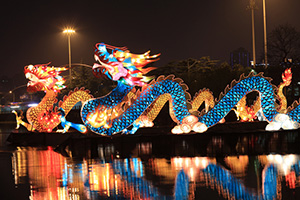
By David Paltza, MSOP, BSBA, CSDI, AACRAO Asian American and Pacific Islander Caucus, Community and Content Facilitator
Some of you might be very familiar with the Lunar New Year commonly known as the Chinese New Year. But did you know that it is widely celebrated across many Asian nations and Asian-American communities? I grew up in a very culturally
Asian household (Filipino, to be exact), in the beautifully diverse city of Los Angeles, CA. One facet of this huge city of wonderful diversity is the opportunity to celebrate a variety of cultures with full equity and inclusion.
In that spirit, below are 5 things to know about the Lunar New Year:
When? Between late January and early February on the second new moon after the winter solstice, the lunisolar calendar welcomes the beginning of spring. Most traditions include festivals, parades, symbolic food,
and elders giving money to children and youth.
Why? Having originated as an agricultural tradition in ancient China with farmers using the moon as a reference for when to sow and harvest, it continues as an annual celebration and official holiday across Asian nations and communities.
How? On a rotation based on the 12 animals of the Chinese Zodiac, deriving from the tale of a “Great Race” in Chinese mythology, each ascribing different personality traits and annual fortunes to people born in each year. 2024 is the year of the Dragon, and those born in the years of the Dragon are generally thought to have a captivating demeanor, distinct personality, and strong leadership abilities.
Who? With “bringing honor to the family” as an unquestionable value and precedent in the Asian culture (think Mulan), about 2 billion people of various related backgrounds celebrate, return to their hometowns, and visit
family—an occurrence so vast it is often referred to as “The Spring Migration”.
Where? Besides China, it is celebrated across surrounding nations including Singapore, Indonesia, Malaysia, the Philippines, and even parts of Japan, each with its own variations. In Vietnam, they recognize the year of the Cat
instead of the Rabbit, and elders of Korea give silk bags of money to the children.
Of course, as a lover of food, my favorite tradition of this holiday is the communal enjoyment of symbolic food. Of the many dishes and treats shared, South Korea, Vietnam, and the Philippines especially celebrate community and inclusion through the incorporation of sticky rice, emblematic of “togetherness”. While this message does not encompass all the customs and opportunities behind the Lunar New Year, I hope this helped you appreciate some diversity from around the globe as seen even in America.
Are you interested in getting more involved with your AACRAO membership? Explore AACRAO's caucuses, these networking and affinity groups are designed to promote diversity and equity in higher education.